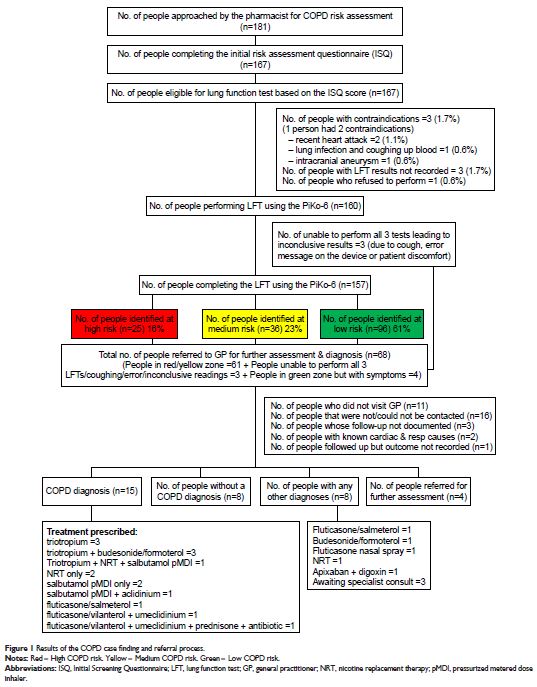9 0 5 7 8
论文已发表
注册即可获取德孚的最新动态
IF 收录期刊
- 2.6 Breast Cancer (Dove Med Press)
- 3.9 Clin Epidemiol
- 3.3 Cancer Manag Res
- 3.9 Infect Drug Resist
- 3.6 Clin Interv Aging
- 4.8 Drug Des Dev Ther
- 2.8 Int J Chronic Obstr
- 8.0 Int J Nanomed
- 2.3 Int J Women's Health
- 3.2 Neuropsych Dis Treat
- 4.0 OncoTargets Ther
- 2.2 Patient Prefer Adher
- 2.8 Ther Clin Risk Manag
- 2.7 J Pain Res
- 3.3 Diabet Metab Synd Ob
- 4.3 Psychol Res Behav Ma
- 3.4 Nat Sci Sleep
- 1.9 Pharmgenomics Pers Med
- 3.5 Risk Manag Healthc Policy
- 4.5 J Inflamm Res
- 2.3 Int J Gen Med
- 4.1 J Hepatocell Carcinoma
- 3.2 J Asthma Allergy
- 2.3 Clin Cosmet Investig Dermatol
- 3.3 J Multidiscip Healthc

Community pharmacy-based case finding for COPD in urban and rural settings is feasible and effective
Authors Fathima M, Saini B, Foster JM, Armour CL
Received 28 June 2017
Accepted for publication 15 August 2017
Published 18 September 2017 Volume 2017:12 Pages 2753—2761
DOI https://doi.org/10.2147/COPD.S145073
Checked for plagiarism Yes
Review by Single-blind
Peer reviewers approved by Dr Charles Downs
Peer reviewer comments 2
Editor who approved publication: Dr Richard Russell
Background and objective: Case finding of patients at risk of COPD by community pharmacists
could identify a substantial number of people with undiagnosed COPD, but little
is known about the feasibility and effectiveness of pharmacy-based COPD case
finding using microspirometry. The objective of this study was to assess the
feasibility and effectiveness of COPD case-finding service provided by
community pharmacists, utilizing a combination of risk assessment questionnaire
and microspirometry.
Methods: A 6-month service was conducted in 21 community pharmacies in
Australia. Pharmacists trained in COPD case finding, including lung function
test (LFT), invited their patients aged ≥35 years with a history of
smoking and/or respiratory symptoms to participate. High-risk patients were identified
via a COPD risk assessment questionnaire (Initial Screening Questionnaire
[ISQ]) and underwent LFT. Pharmacists referred patients with a forced
expiratory volume in 1 second (FEV1)/forced
expiratory volume in 6 seconds (FEV6) ratio <0.75
to their general practitioner (GP) for further assessment and diagnosis.
Results: In all, 91 of 167 (54%) patients had an ISQ score >3 indicating
high COPD risk. Of the 157 patients who were able to complete LFT, 61 (39%) had
an FEV1/FEV6 ratio of
<0.75 and were referred to their GP. Patients with high ISQ symptoms scores
(>3) were at a significantly higher risk of an FEV1/FEV6 ratio of
<0.75, compared to patients with fewer COPD symptoms. A total of 15 (10%)
patients were diagnosed with COPD by their GP. Another eight (5%) patients were
diagnosed with other medical conditions and 87% of these were initiated on
treatment. Although only half of all screened patients lived in regional areas,
93% of those diagnosed with COPD were from regional areas.
Conclusion: A brief community pharmacy-based COPD case-finding service
utilizing the ISQ, LFT and GP referral is feasible and may lead to
identification and diagnosis of a substantial number of people with COPD. This
might be an important strategy for reducing the burden of COPD, particularly
for those living in rural locations.
Keywords: COPD, community pharmacy, case finding, case detection, screening
